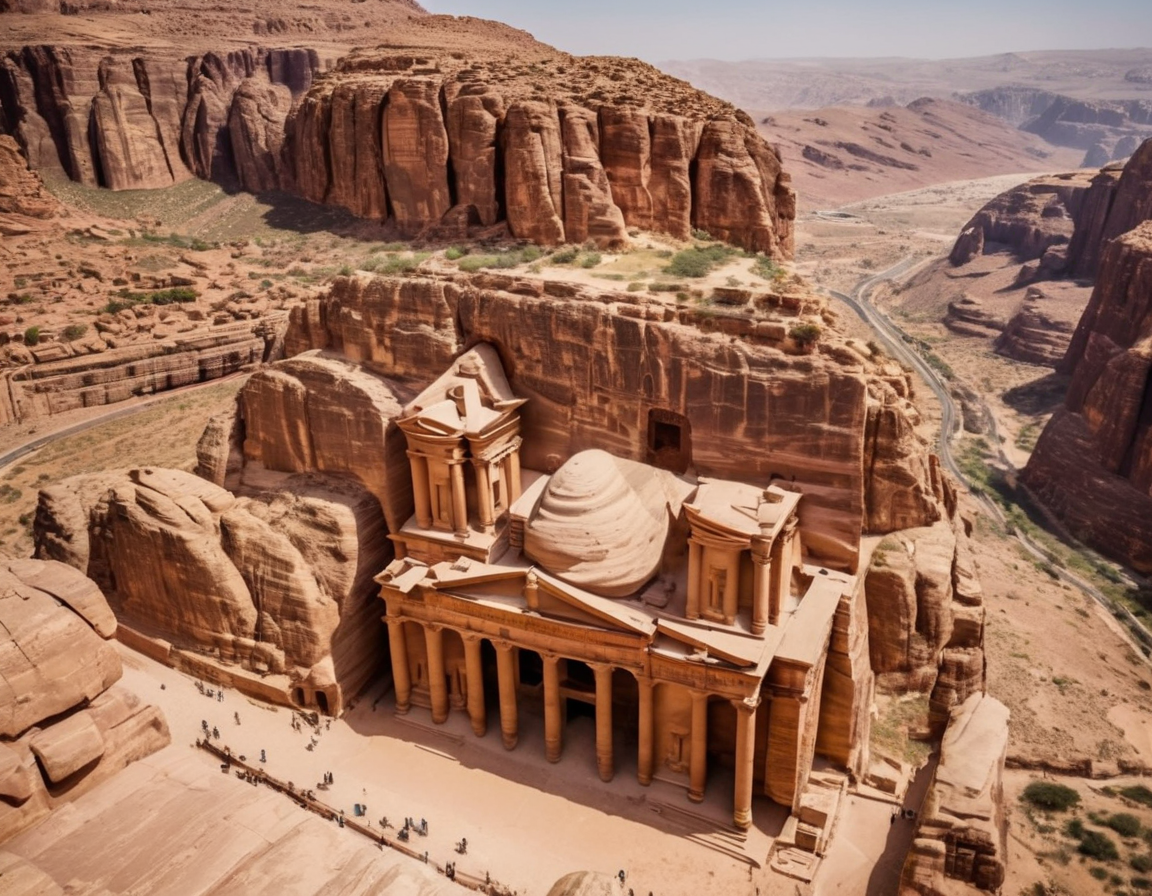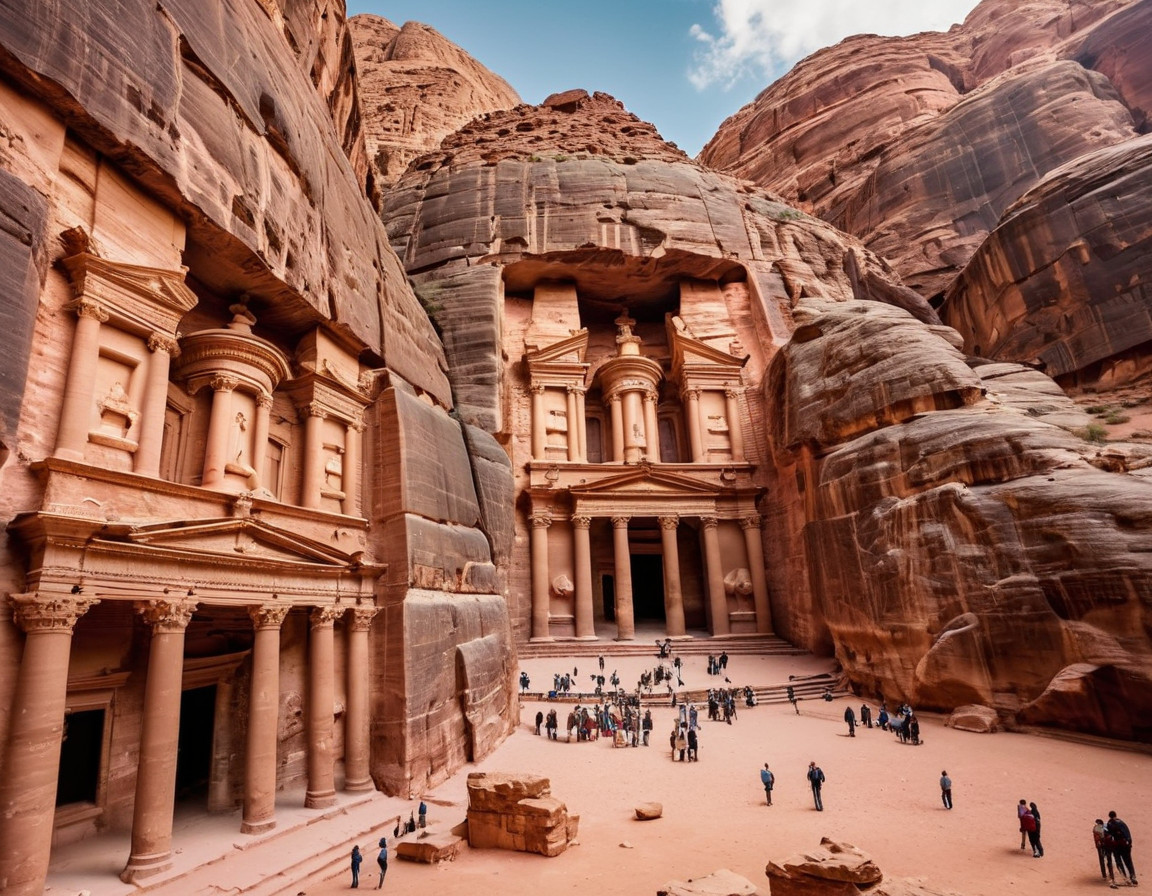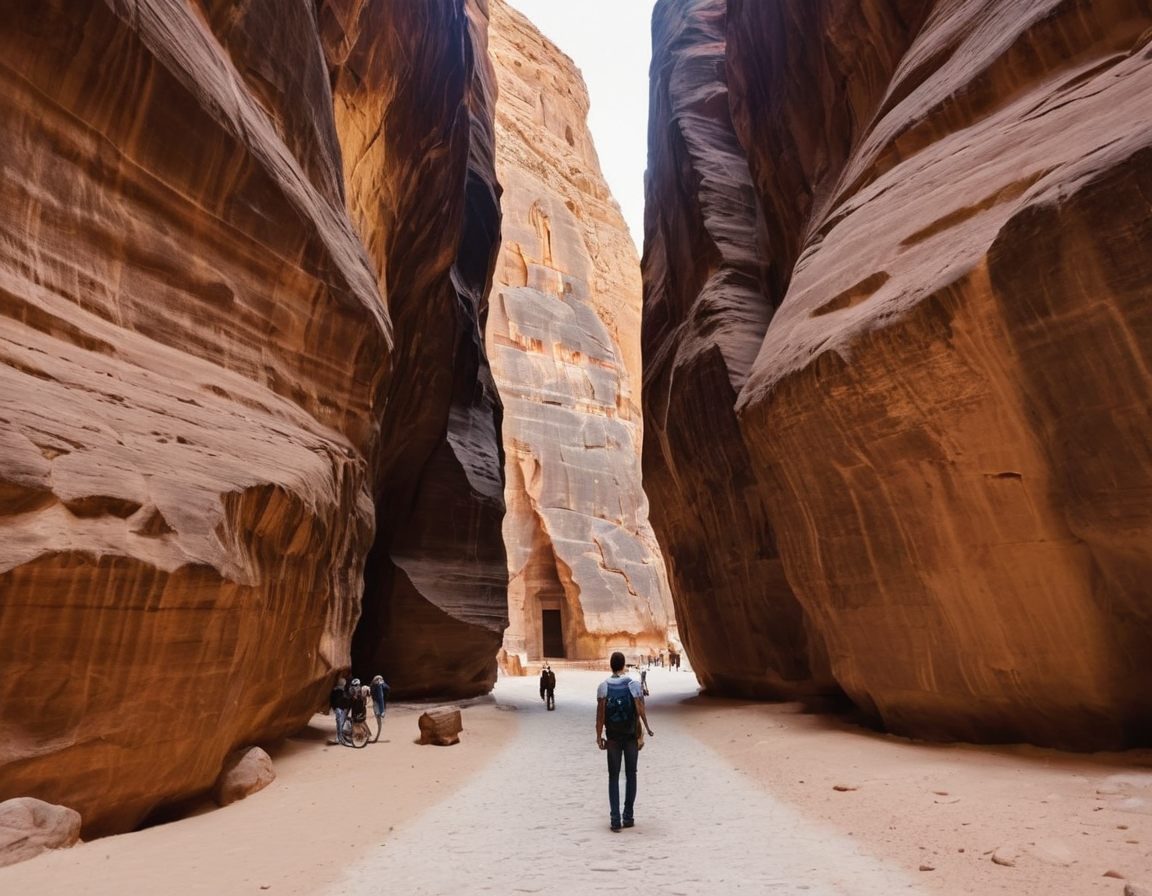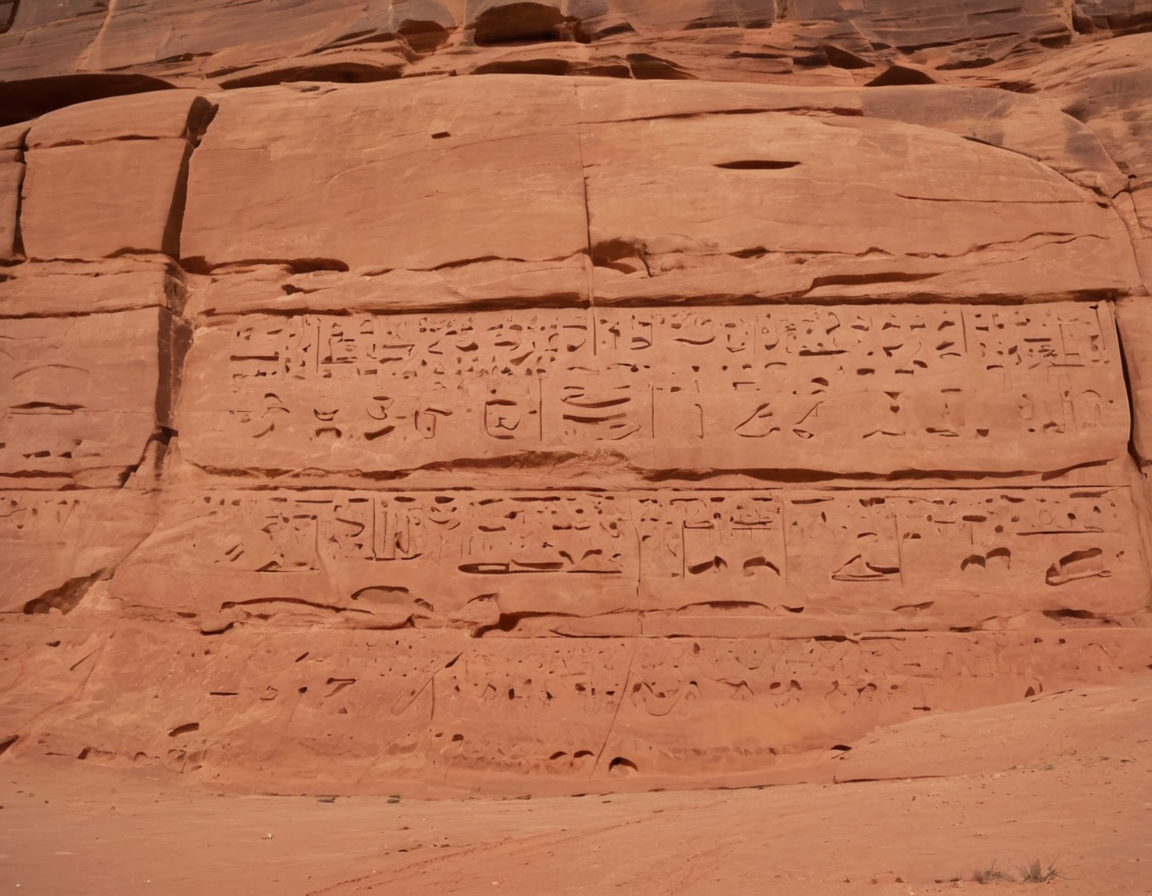Unveiling the Story of the Ancient City of Petra: A Marvel of Engineering and Craftsmanship
Discovering the Rose City: Petra’s Enigmatic Allure
Carved into the blush-hued cliffs of Jordan’s rugged landscape lies an ancient city that has captivated travelers for centuries. Petra, known as the ‘Rose City’ for its color-flushed stone, is a towering testament to human ingenuity and the artistic spirit of the Nabataeans. In this post, we’ll delve into the fascinating history, architecture, and mysteries that surround this UNESCO World Heritage Site. 
The Origins of Petra: A Crossroads of Antiquity
The story of Petra begins in the 4th century BCE, with the Nabataeans, a nomadic tribe who eventually settled in the area, leveraging its position to become a bustling trade hub. The city’s strategic location allowed it to flourish, becoming a melting pot of cultures and a nexus for the incense trade routes that linked the Mediterranean with the Arabian Peninsula and beyond.
Architectural Wonders in the Desert
Petra’s most awe-inspiring feature is undoubtedly its architecture. The Nabataeans were exceptional engineers — their crowning achievement being the Al-Khazneh, or ‘The Treasury,’ which stands as the city’s most iconic facade. But there’s far more to Petra than just the Treasury. From the vast amphitheater to the Royal Tombs, these stone-carved edifices represent a blend of Hellenistic architectural styles with traditional Nabataean elements. 
The Ingenious Water Management System
One cannot discuss Petra without mentioning its highly advanced water conveyance system. This network of dams, channels, and reservoirs was crucial for the survival of Petra’s inhabitants and their prosperity in an arid desert region.
The Nabataean Script and its Legacy
Alongside their architectural feats, the Nabataeans developed a script, which served as a precursor to Arabic writing. These inscriptions, etched into the very stones of Petra, offer valuable insights into their culture and daily life.
Petra Today: A Jewel of Jordan’s Heritage
In modern times, Petra has emerged as a symbol of Jordanian national pride and a major tourist attraction. It continues to enchant visitors with its mystique and archaeological significance. As you wander through the Siq, a narrow gorge leading to the city, you’ll come across the majestic sight of the Treasury — a moment of discovery akin to that experienced by Swiss explorer Johann Ludwig Burckhardt, who reintroduced Petra to the Western world in 1812. 
Join us as we unravel the stories etched into the very rock of Petra, exploring the ingenuity of the Nabataeans and the enduring allure of this ancient desert marvel. 






